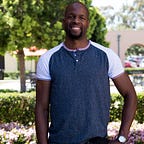Your parent should never do (fill-in-the-blank) exercise. Really?
Maybe you heard about or saw the Readers Digest article “Exercises To Never Do After Age 50” that was published a few years ago. There was a substantial backlash from many in the fitness and wellness profession along with other like-minded individuals. The title itself displays ridiculous assertions made as what this population as a group should never do. It dripped of ageism.
Perhaps you have read or heard others say things like running is bad for older adults, they should not do squats or deadlifts are dangerous. That is such a general and overreaching assumption and disregards the kind of movements that your parents (and you) have to do for everyday life activities.
For an individual, there may be reasons why a specific movement is not good for their body. To explain it is not just squats are bad for someone. Instead, there is a certain way of doing a movement with or without an external weight that is not good for their body. What if your mother has scoliosis? Would it be a good idea to load her up with some weights on their back and ask her to do some squats? At least on paper, probably not. It would not be my go-to way of having her do squats. However, I am giving you an example with not much background about her physical history. Chances are many individuals safely do it alone or with a fitness professional.
The point is that there are variations of every type of movement. Your mother could do some variation of a squat without a barbell on her back. There is still a way to help her increase her leg strength. She still has the potential to practice getting out of a seated position stronger. She needs to maintain or improve her bone density. External weight could be introduced in other ways like having her hold a dumbbell or weighted ball. When individuals do have restrictions they usually will find a way to move. Even with some hip or knee impingements they still find a way to go to the bathroom or sit down. They could be compensating in ways that could lead to more injury. What that means is that there are ways that they can work within a restriction to move better and using their bodies better. Also, they can become stronger or more agile.
The big outcome of practicing better movement is that they feel more confident, capable and independent.
How does saying never facilitate that?
Last example: Someone walks into a gym without any chronic pain performs a deadlift with impressive weight coupled with horrible form. It is part of their work out twice a week. It is a matter of time until something hurts. It can be like a nail in a tire, it may not happen overnight but something will give. Does that mean deadlifts are bad for everyone like that person? No. Their form led them to that metaphor of a “flat tire.” What if that same person had good form and was not good about stretching? Let’s say eventually they tweak something because of tightness and blame it on the deadlifts. Is it the exercise’s fault? Not at all.
Thus words like deadlift, squat, lunges or chest presses my strike fear in your parents. It may even strike fear in you thinking about them doing it. Yet they do variations of those movements during their daily life. They possess the ability to practice and do them better. Obviously, pain can be the elephant in the room which can lead to avoidance. Pain is not to be downplayed. Pain can affect our moods and outlook on life. Even with that in mind there is hope. Factors such as more optimal movement, better breathing, stretching, practicing optimal posture or moving with better form can play a part in reducing pain.
Your parent’s body has a history. Things like sports, injury, chronic disease, inactivity or being vigilant about their health all play a part in what they should not be doing.
Even with the “should nots” in mind, chances are strong that there is a variation of a movement that mirrors everyday life that they can and should be doing.
When I talk about this in a gym setting I see and understand clients’ fears. However, when they are shopping and pick up a grocery bag off of the floor they are not thinking about a deadlift. They are thinking about picking up that bag.
They think about getting out of a chair with their grandchild in their arms. They don’t think about squats with weight.
But I get it…I gyms can be intimidating and there can be an expectation to do a movement in the “standard” way. “Standard” exercise terms make us often think of “standard movements.” However, there are always variations or options to a movement.
Encourage your parents to continue (if not more!) movement instead of restricting their movement. If they are stuck reach out to a qualified professional like myself. Sometimes it takes guidance for them to realize and embrace the fact that exercise can help reduce pain and discomfort. They can move better, feel stronger and understand that there are many things that they can do physically.
